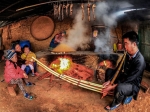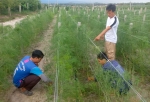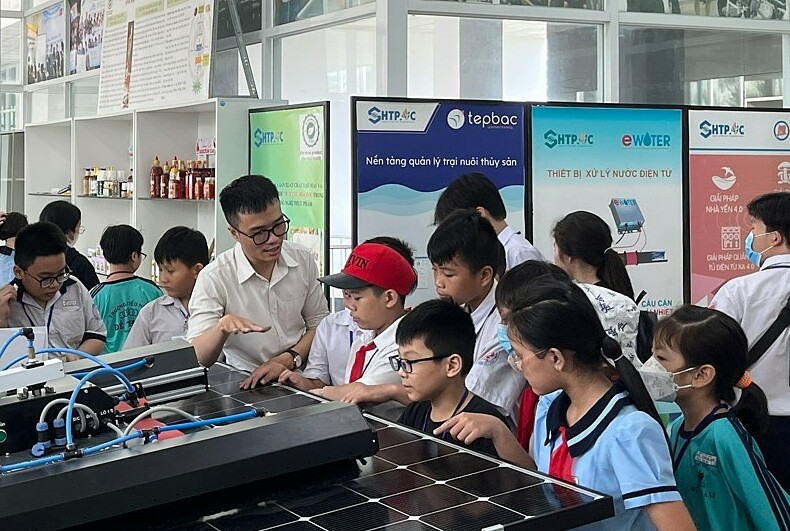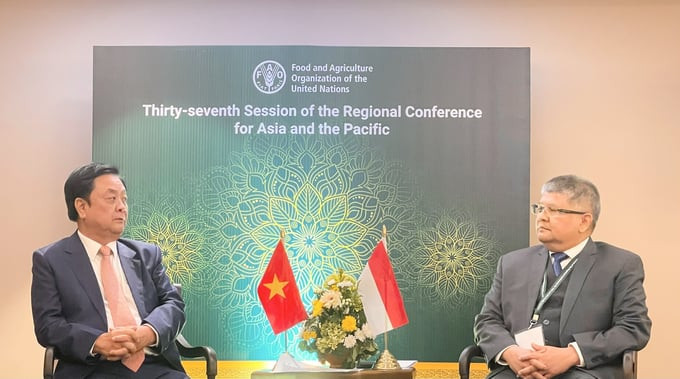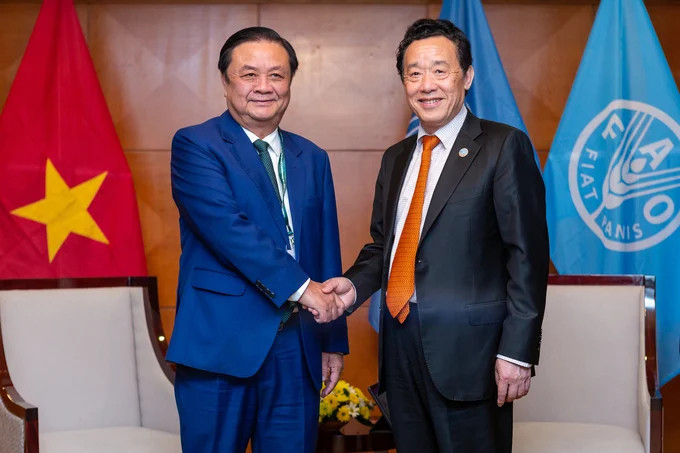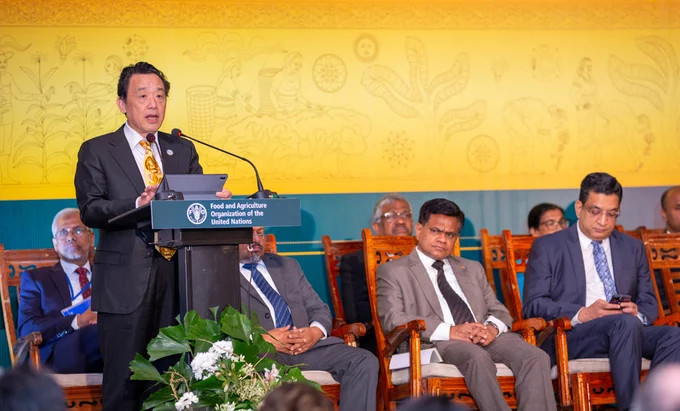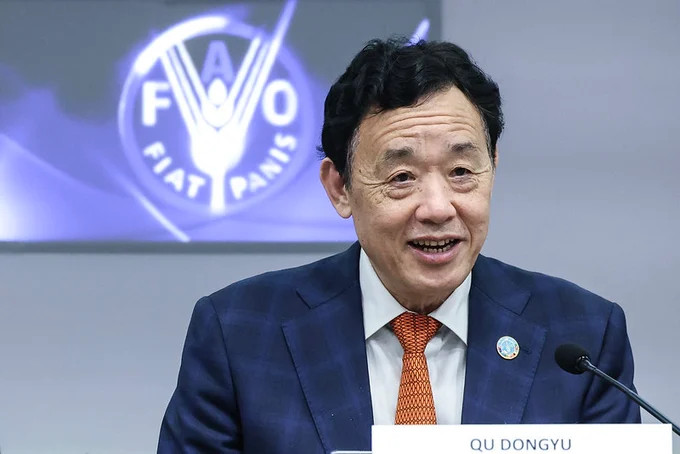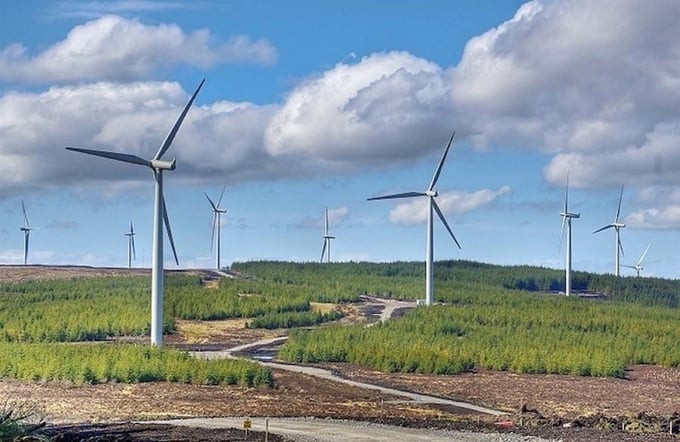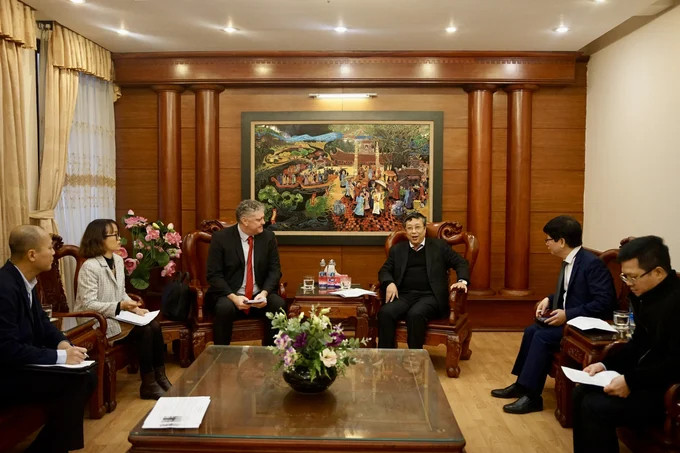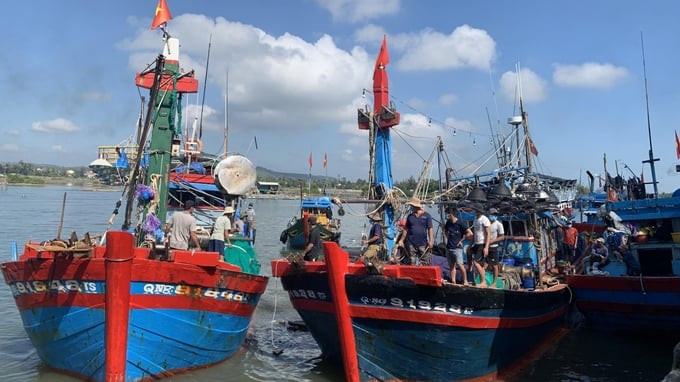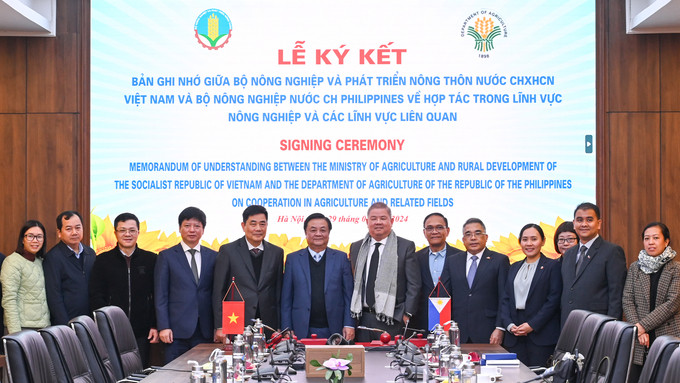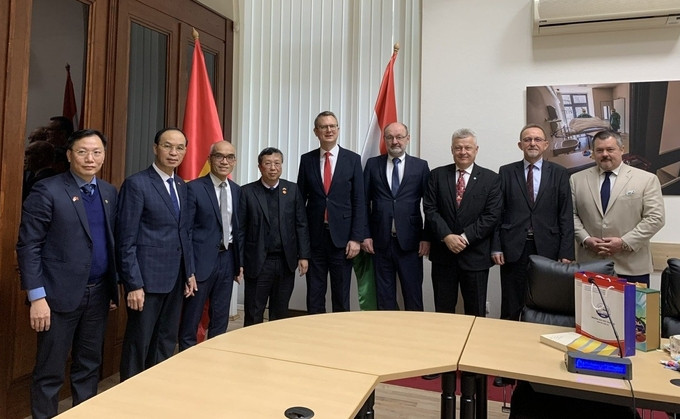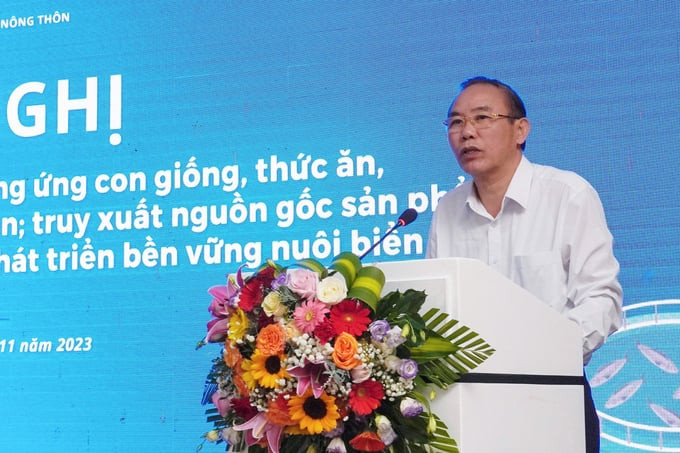
Deputy Minister of Agriculture and Rural Development Phung Duc Tien highlighted the potentials and obstacles of mariculture in Vietnam
With regards to the directions of the Ministry of Agriculture and Rural Development, the Department of Fisheries; Department of Quality, Processing, and Market Development; Department of Animal Health; the Office of the Ministry of Agriculture and Rural Development, in collaboration with the Vietnam Agriculture Newspaper, organized a conference on November 25 in Nha Trang city, Khanh Hoa province on "Current state of broodstock, feed, and equipment supply for mariculture; product origin traceability and sustainable development solutions for mariculture in Vietnam."
Mariculture is a sector with a lot of potential
Deputy Minister Phung Duc Tien stated that the fisheries sector has remained resilient in face of numerous difficulties over the last two years. By the end of October 2023, the sector's total output has reached 7.4 million tons, representing a growth of over 3%. The fisheries sector exhibited a growth rate of 4.88% in 2022, subsequently becoming a crucial pillar in the overall agricultural growth (with a share of nearly 30%).
The Deputy Minister emphasized that mariculture is a sector with great potential with a total marine surface area of over 1 million square kilometers. Consequently, the 12th Central Party Committee issued Resolution No. 36-NQ/TW on October 22, 2018, on the sustainable development strategy of Vietnam's maritime economy by 2030.
"In addition, the Prime Minister has also issued Decision No. 1664, setting the target for mariculture output to reach 800,000 tons by 2025. We have reached the 740,000-ton mark by the end of 2022, and we will reach the target of 800,000 tons in the near future," Deputy Minister Phung Duc Tien stated.
Mr. Tien also added that Vietnam has established several industrial mariculture areas, and diverse breeds have been developed. Accordingly, these potentials must be fully utilized with regards to the new global context, focusing on reducing exploitation and increasing closed-loop production.
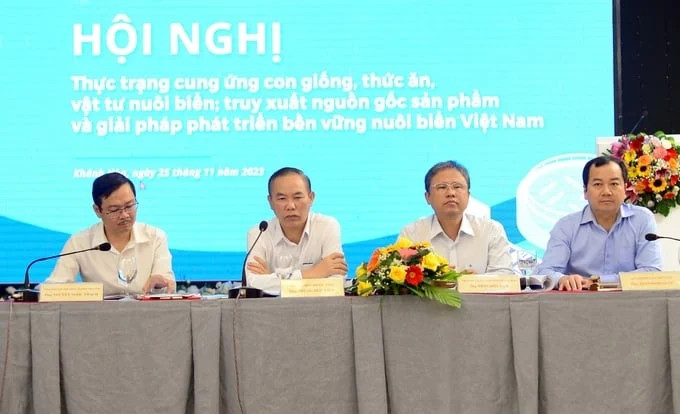
From left to right: Editor-in-Chief of the Vietnam Agriculture Newspaper Nguyen Ngoc Thach; Deputy Minister Phung Duc Tien; Vice Chairman of the Khanh Hoa Provincial People's Committee Tran Hoa Nam; General Director of the Directorate of Fisheries Tran Dinh Luan presiding over the conference on "Current state of broodstock, feed, and equipment supply for mariculture; product origin traceability and sustainable development solutions for mariculture in Vietnam."
However, the Deputy Minister also highlighted several crucial issues in mariculture, such as the lack of proactive measures in managing broodstock, the prevalence of counterfeited and low-quality breeds with uncertified origins, and the continued use of crab and fish-based feeds which cause environmental pollution.
Additionally, local mariculture is fragmented without comprehensive planning, leading to difficulties in the allocation of marine areas. Furthermore, harvesting and processing activities have not generated significant added value. Regarding lobster farming, the Deputy Minister addressed China's upcoming requirements for broodstock and urged relevant agencies to focus on research and resolution.
With regards to the National Strategy for Sustainable Development of the Maritime Economy, the Deputy Minister emphasized the need to transition from traditional aquaculture and seafood exploitation to an industrialized approach with a focus on the application of advanced technologies. Consequently, the Strategy aims promote sustainable aquaculture and fisheries activities, thereby strengthening the resilience of the fishing industry, promoting modernity in production, elevating its integration process, and accelerating exports.
Solving the issue of broodstock
Mr. Tran Hoa Nam, Vice Chairman of the Khanh Hoa Provincial People's Committee, presented at the conference: "The main species currently being farmed in the mariculture areas of Khanh Hoa province include sea bass, cobia, Snubnose pompano, lobsters; with lobster farming being the most economically valuable, favored by tourists and foreign markets." According to Mr. Nam, Khanh Hoa province has over 97,000 aquaculture cages, producing an annual yield of 18,000 tons, providing employment opportunities for over 4,000 rural laborers, increasing income, and improving the lives of coastal residents, contributing to enhancing the aquacultural production value.
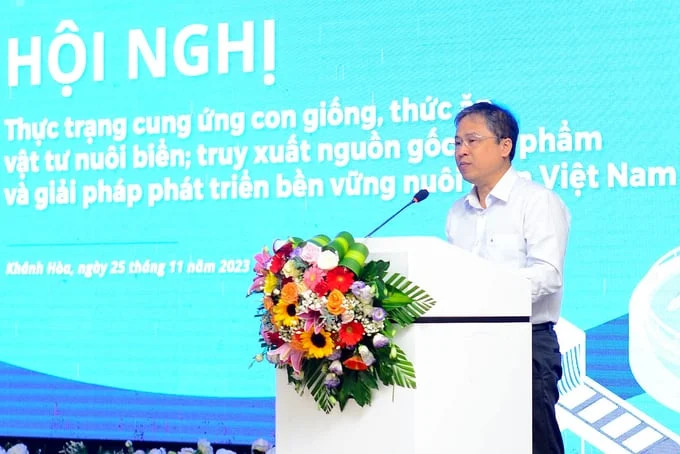
Vice Chairman of the Khanh Hoa Provincial People's Committee, Mr. Tran Hoa Nam, presenting about the province's challenges in mariculture development
However, mariculture activities in Khanh Hoa province and Vietnam as a whole predominantly is located nearshore, featuring small-scale operations using traditional wooden cages with low durability and stability, and reliance on fresh feed, which can cause environmental pollution. Additionally, local maricultural activities are fragmented without comprehensive planning, which creates difficulties in allocating marine areas efficiently. Moreover, the harvesting and processing stages have not generated significant added value.
The management of broodstock has been largely ineffective, with an emphasis on lobster broodstock and imported mariculture broodstock, which has caused significant difficulties in the managing and tracing of lobster and mariculture product origin to meet current market requirements.
As a result, Mr. Tran Hoa Nam emphasized the need for solutions to manage and control lobster broodstock and imported mariculture broodstock. Accordingly, sustainable lobster farming solutions need to be developed, and origin traceability for mariculture products, including lobster, should be addressed to meet market demands.
Establishing 4 coastal aquaculture areas
Mr. Nguyen Thanh Huyen, representing the Vietnam Administration of Seas and Islands under the Ministry of Natural Resources and Environment, stated that by the end of 2018, the allocation of marine areas for mariculture had been implemented in compliance with regulations on the allocation of coastal water surfaces and the allocation of water surfaces for aquaculture as prescribed under the 2003 Law on Fisheries and the 2003 Land Law. Consequently, these act as an important basis for the development of aquaculture area codes.
However, according to reports made by local Departments of Natural Resources and Environment in provinces with a coastline, the allocation of marine areas for mariculture was progressing slowly by the end of December 2022, with nearly no marine area allocated for mariculture.
Regarding planning issues, Mr. Huyen suggested stakeholders to build 4 coastal aquaculture areas. Accordingly, these areas will include the coastal and marine areas of the Red River Delta region; the coastal and marine areas of the North Central and Central Coastal regions; the coastal and marine areas of the South Central Coast; and the coastal and marine areas of the Mekong Delta region.
After receiving opinions from the Ministry of Natural Resources and Environment, Deputy Minister Phung Duc Tien proposed a review of the planning and implementation process at the local level. In addition, he suggested the Ministry of Natural Resources and Environment to coordinate with the Ministry of Agriculture and Rural Development and relevant agencies in streamlining administrative procedures and communicate regulations effectively to the people.
Translated by Nguyen Hai Long




